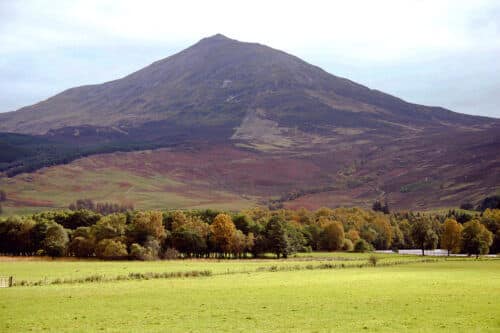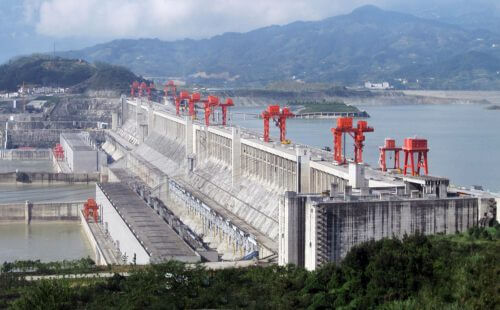Hagai asks: How much does the earth weigh and how was it weighed?
How do you weigh a star or a planet? Sort of like weighing tomatoes in the market - we use gravity.
When you weigh goods in the supermarket or your own weight in the bathtub you are measuring the force with which the earth pulls the body towards it. As the body's mass increases (it has more matter), it will be pulled towards the center of the Earth with a stronger force. In the "International Institute of Weights and Measures" in the town of Sevres near Paris, there is a weight made of platinum and iridium: a type of precious metal that is in no danger of reacting with the air. The mass of the weight is a kilogram exactly and according to it standard weights of standards institutes in the world are calibrated. Every time the jade puts the bag of potatoes on the scales, the weight is received on the display, through a chain of calibrations, in multiples of this standard kilogram weight. This is possible because the Earth exerts on a bag of vegetables that weighs 2 kg twice the force that it exerts on the attributed weight in France.
In the 17th century, the father of physics, Isaac Newton, formulated a wonderful law: the law of universal gravitation. Any body, Newton taught us, will exert a gravitational force on every other body, the magnitude of the force depends only on the mass of the bodies and the distance between them (the force increases with the mass and decreases with the square of the distance). The greater the mass of the body, the stronger the force of gravity. Not only the earth draws you to it but also the walls of the room and the fly on the window. In our daily life, we do not feel the gravitational force exerted by small bodies because they are completely negligible compared to the force exerted on us by the fat earth. And yet: even small bodies attract and all that is needed to calculate the mass of the earth is to know how much gravitational force exerts a body whose mass we know.

The largest bodies around us that we can estimate are mountains. In 1774, the astronomer Charles Mason set out to measure the gravitational force exerted by Mount Schiehallion in Scotland on objects around it. This mountain was chosen because it is relatively isolated in its surroundings and its shape is simple enough to estimate its volume. A careful mapping of the mountain was required, which was the first site in the world for which a topographic map was prepared. The elevation lines familiar to anyone who has learned to look for "dome" "cantilever" and "saddle" in navigation classes are a byproduct of this research. Mason took with him to the mountain a barbell tied to a long string. In a perfect plane, the string will fall exactly "down", meaning in the direction of the center of the earth, but the nearby mountain also exerts a force of attraction that pulls the string towards it.
The challenge was to find the "down" direction with great precision and for that a long series of astronomical observations were required to calculate the angle between the pendulum and the stars (not an easy task especially in cloudy Scotland). It turns out that Newton was right: the string near the mountain deviated from the vertical direction by approximately 11 seconds (0.003°). This tiny deviation made it possible to determine the ratio between the mass of the mountain (which was calculated from its volume and the density of the rock) and the mass of the Earth and thus estimate the mass of the world. The difference between this measurement and the accepted value today was 20%.
14 years after the pioneering journey to Scotland, the British scientist Cavendish managed to improve accuracy without climbing distant mountains and in fact without leaving his home at all. Henry Cavendish was an eccentric and shy genius, he avoided almost all social interaction and was unable to communicate or be in the presence of women. He devoted his time of solitude to scientific experiments. To weigh the Earth, he balanced two weights on a 180 cm long rod and tied it with a string to the ceiling of a closed room. When he brought 350-pound lead weights (about 159 kg) closer to those suspended in the air, the tiny force of attraction between the weights was enough to turn the rod slightly, and therefore to slightly twist the string on which it was hanging. From the twist of the string he watched as the telescope zoomed in, Cavendish calculated the gravitational force of the weight and from the ratio between this force and the gravitational force exerted by the Earth he calculated its mass. Since Cavendish, our measurement capabilities have improved and today the mass of the Earth is estimated at 5.972×10^24
kg or 5,974,200,000,000 billion tons.
This information makes it possible to answer Vadik Rosenblit's question: can everything that man has built on Earth affect the Earth's rotation.
It is easy to understand the mindset that produces such questions, we are exposed to a lot of gloomy news about the impact of human activity on the planet. The landscape around us is changing, the wild areas are disappearing and if our world is changing so much in its appearance, why shouldn't it change in its movement?
Our influence on the world is important and sometimes destructive but in terms of the whole planet it is limited to a thin shell. About 6370 kilometers is our distance from the center of the earth. The tallest building we built: The Burj Khalifa in Dubai is 828 meters tall. In the opposite direction: deeper into the ground we achieved more impressive results. The deepest "basement" built is the Jinping Underground Laboratory: a laboratory for the study of neutrino particles that is 2.4 kilometers deep. And the deepest drilling is an oil well in Qatar which is 12,289 meters deep: an impressive technological achievement but it is less than 2 thousandths of the distance to the center of the sphere. Signs of life, by the way, can be found up to a depth of about 3 km in the thick of the earth where extremely resistant bacteria manage to exist and make a living from sulfur and iron independent of sunlight.
The Earth is an (almost) closed system. Its mass has remained (almost) unchanged in the last 4 billion years and our activity on it goes far less than we think. In the last 60 years since the glorious crash of the Soviet Luna 2 on the surface of the moon, we have taken a little more than 200 tons from Earth into space (most of this mass we brought to our own backyard - the moon). This amount of material dwarfs even compared to the Earth's minimal natural mass exchange: several tens of thousands of tons that arrive as meteorites from space and about 100,000 tons of hydrogen and helium that the atmosphere loses annually. And yet it is possible that one human structure is large enough to cause some change in the movement of the earth,

The Three Channel Dam in China: one of the largest engineering works of all time created a huge lake with a volume of 39.3 cubic kilometers (39 billion tons) of water or about the volume of 10 Kinneras at peak level. Raising such a mass of water to a height of about 180 meters causes the earth's rotation on its axis to slow down a little, just as ice skaters slow down their rotation when they swing their arms to the sides. How little: according to NASA calculations, this dam extended the day by 0.06 millionths of a second (60 billionths of a second). The speed of the earth's rotation is less uniform than we tend to assume. The moon's gravity causes the sea water to ebb and flow and slows us down much more than artificial dams or lakes. In the last hundred years, the day has lengthened by 1.7 thousandths of a second, which means that the moon causes a greater change in one day than the largest human construction enterprises. (Editor's Note: This is in contrast to the destructive change we are causing to our atmosphere. AB)
Did an interesting, intriguing, strange, delusional or funny question occur to you? Send to ysorek@gmail.com
More of the topic in Hayadan:

2 תגובות
The ratio is not 2 thousandths, these are 2 decimals. = 0.19
a question. Why should the "down" direction be calculated? Is it not possible to simply measure the deviation from two different sides of the mountain against a fixed point in the sky?